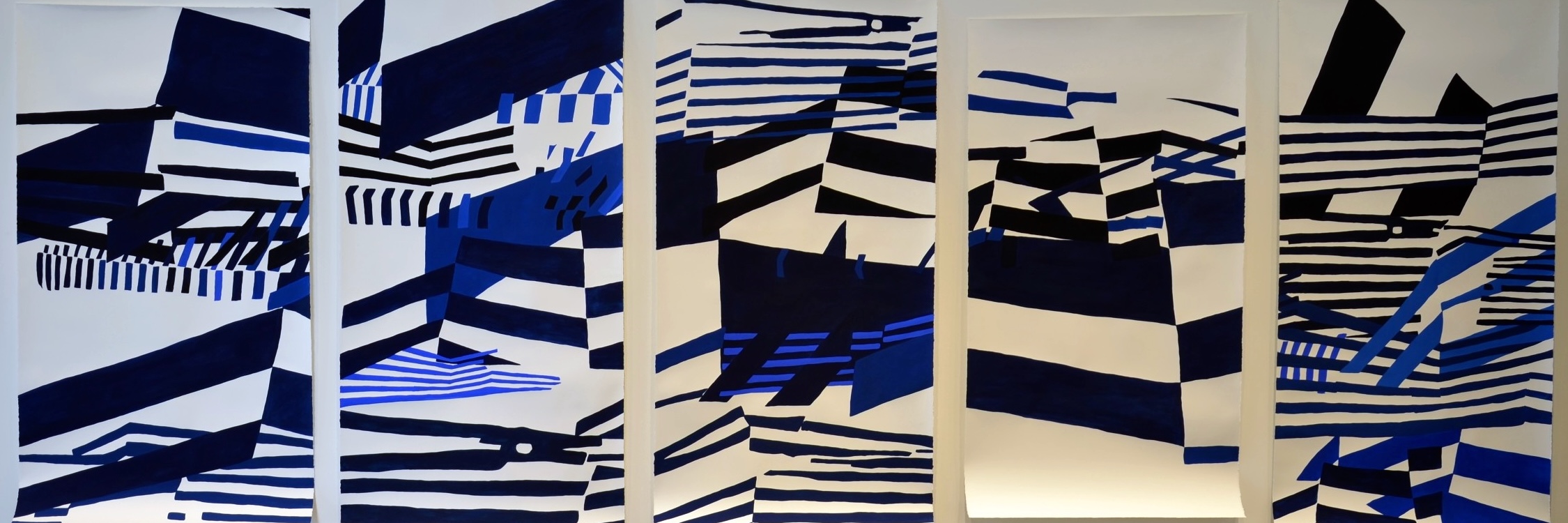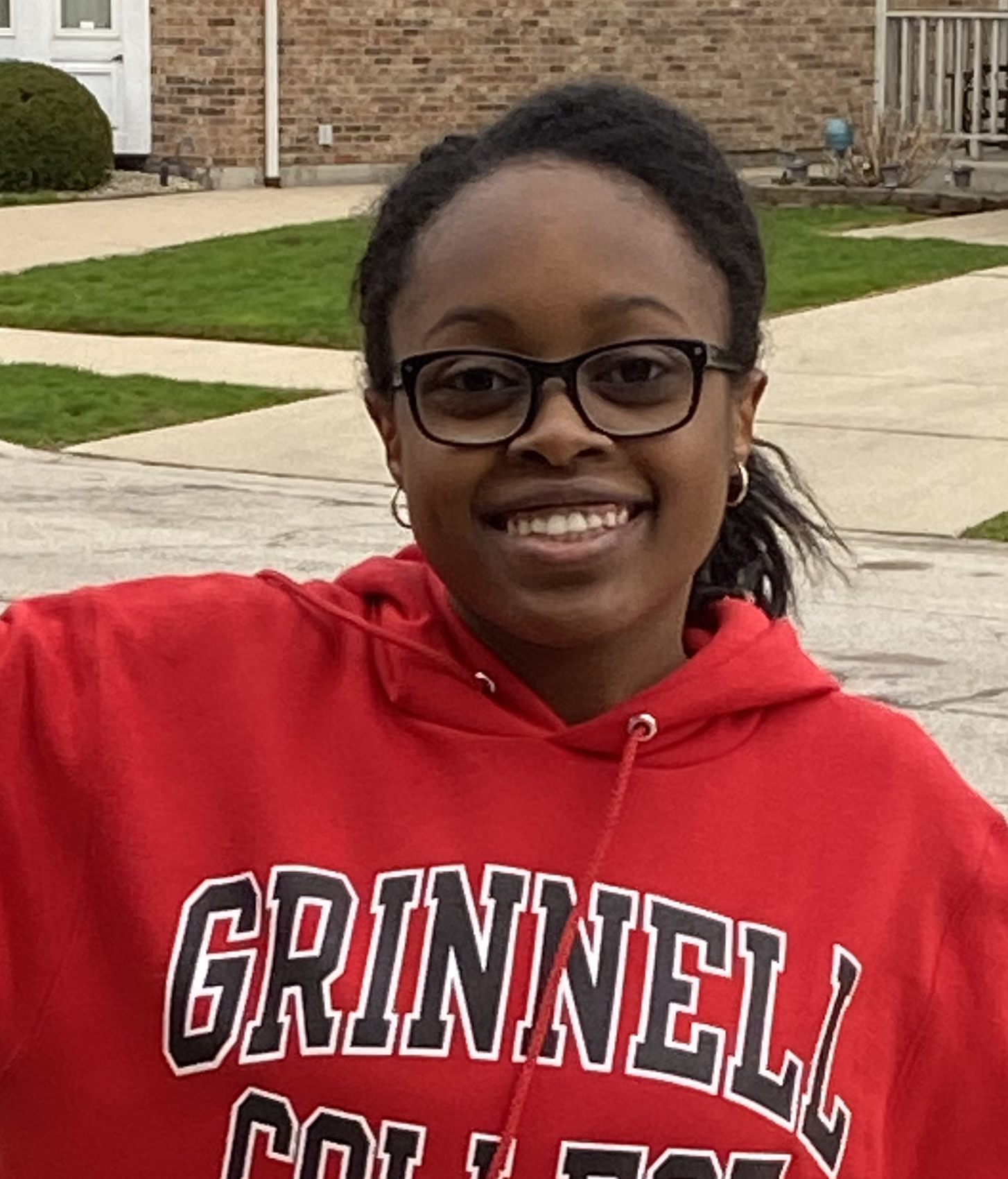A woman drives down a narrow road, surrounded by snow-covered flatlands. In one of the fields is a building with a small sign just beyond the front door: “Church at Noon,” it reads. Perhaps. It’s not the contents of the sign that strike the woman, but rather the bright neon blue daze it emits amongst a sea of surrounding white fields.
Blue and white. These two colors make up Lisa Bergh’s sculpture: “Sunday School at Noon”.
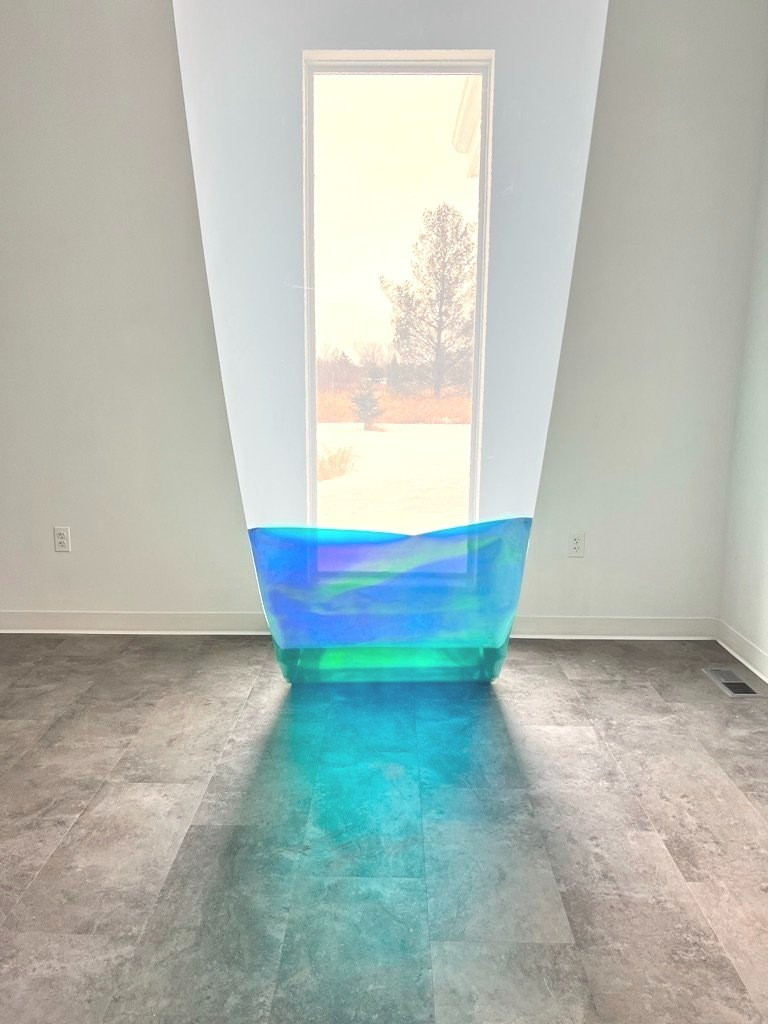
‘Sunday School at Noon’ from Bergh’s ‘I Have Never Seen the Northern Lights’ exhibition, 2022. Photo by Lisa Bergh.
Lisa Bergh is an abstract 3D artist living in New London, Minnesota. She is also an art instructor at Ridgewater College._ Her sculptures, tapestries, and 3D paintings have been exhibited across the upper Midwest in museums and small galleries. She values the connections she can make with other people, especially other artists, and she’s involved in multiple initiatives to bring together artists in the rural Midwest together as a community. Despite her work being abstract, her ideas and motivations are rooted in the world around us as we can see it.
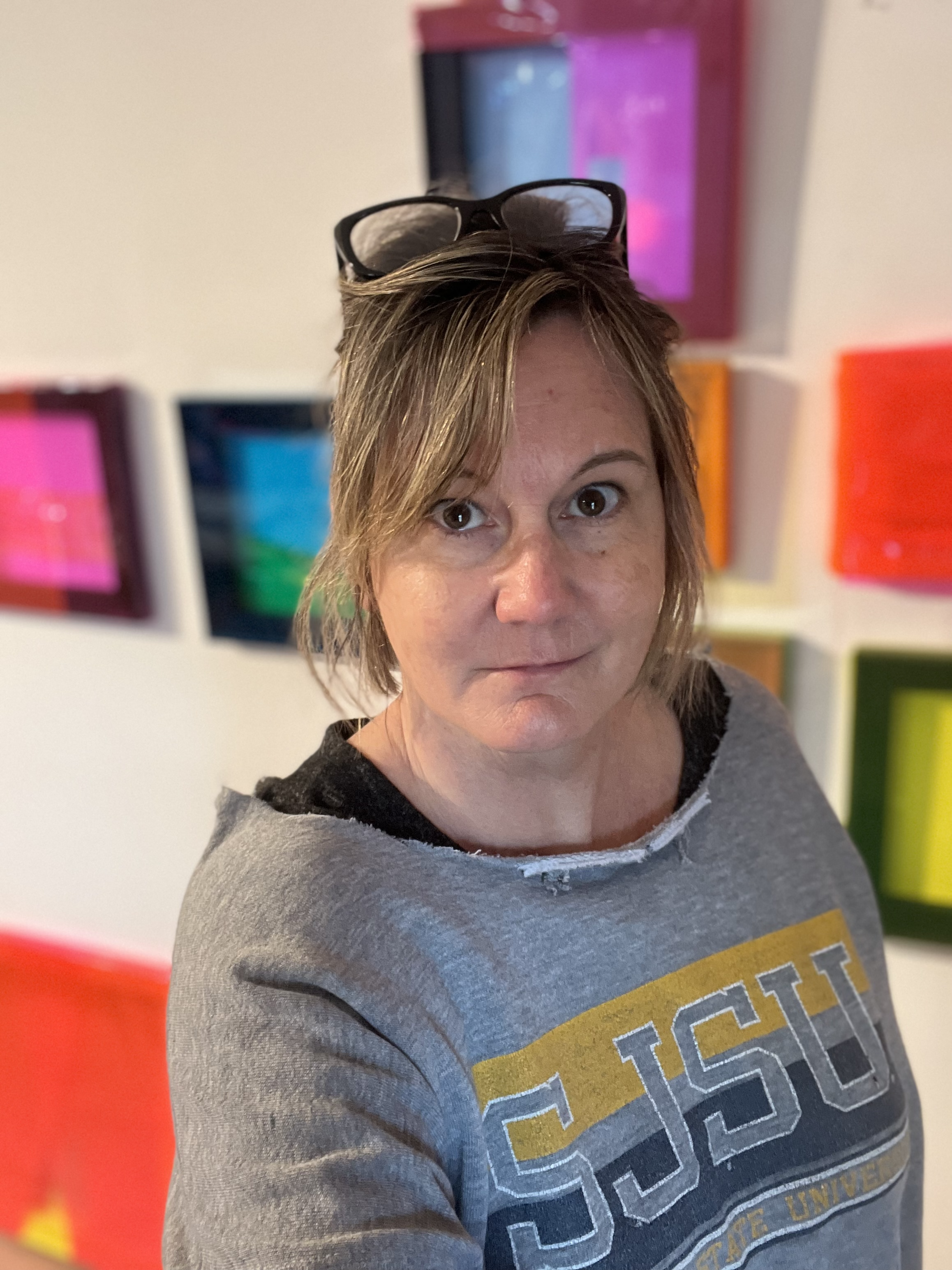
Photo by Lisa Bergh.
Bergh’s subject matter is memory. She observes small, often overlooked visuals from the world, such as flags blowing in the wind or a frozen lake, then–using sculpture, tapestry, or some combination of both–she creates abstract representations of the symbols that stand out to her. “The work is rooted in present-tense reactions to past experiences,” she says. “These visually poetic yet mundane landmarks are folded into my visual practice.” She takes a “research-based” approach to each project, and she will often try something new out of curiosity, or will intentionally limit her materials to work within a certain medium. It’s a scientific approach to creation, both in the process and in her intentions with her work.
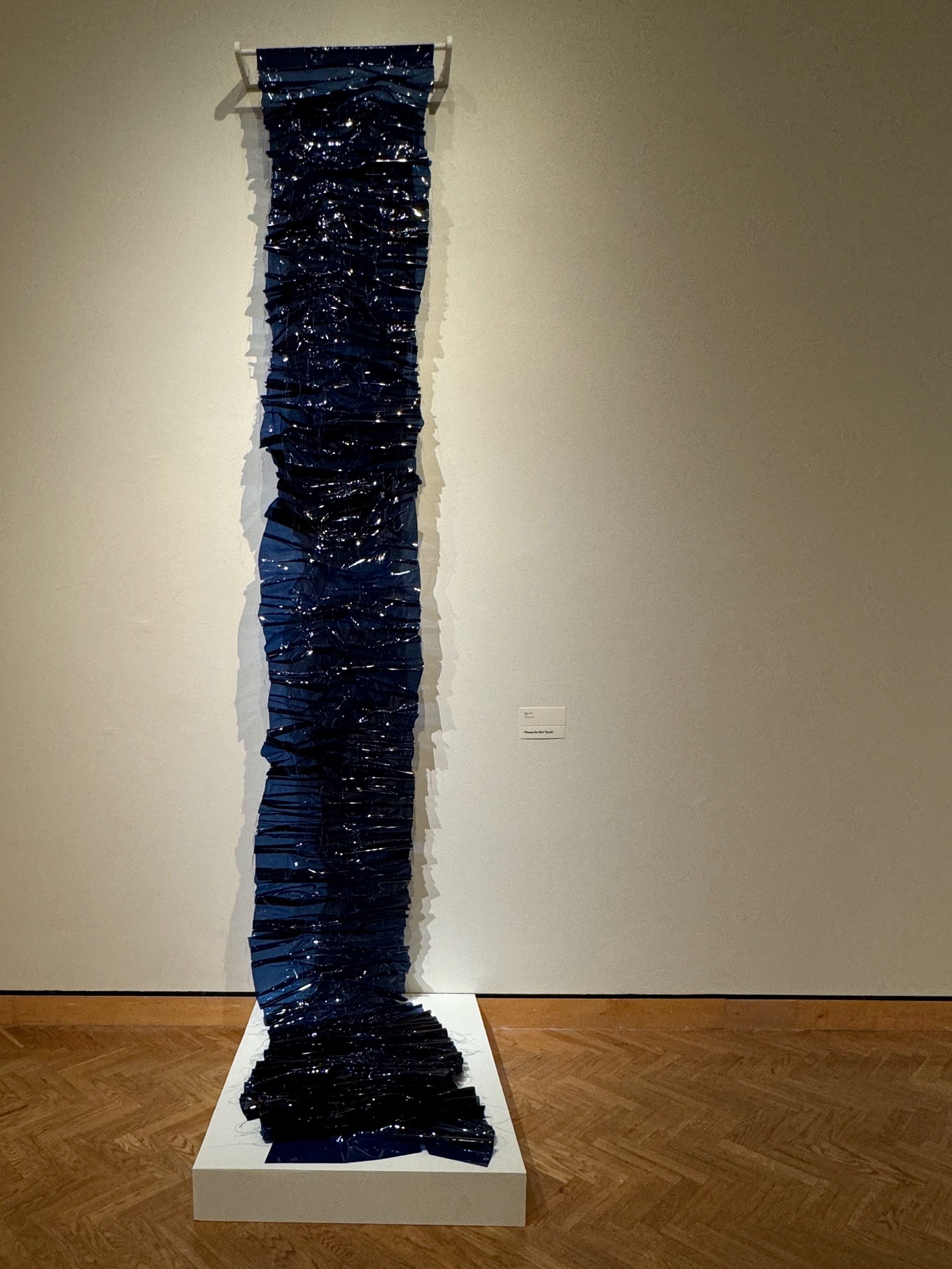
‘Trace’ from the ‘Topography’ exhibition, 2023. Photo by Lisa Bergh.
While Bergh does not claim to have a professional background in cultural anthropology, she says her approach is informed by her brief study of the subject in college. “Being an artist is like being an anthropologist with jazz hands,” she says. She often finds herself questioning what people find interesting, and why, and asks herself: What do people react to when they see the world around them, and what causes those reactions?
To explain her approach, Bergh recounted a story about an event that occurred during a trip she took to Chicago. She was with a friend and noticed a tapestry with an orange, grid-like pattern on it. Her friend said it reminded her of a construction fence, a plastic fence used to cordon off entry into a site. Bergh thought of it as a snow fence, which is used to minimize the amount of snow that wind can blow into an area. Differing descriptions, Bergh says, but she and her friend were describing the same object. The interaction raised an intriguing philosophical question for her about how we interpret the world around us, each seeing the same patterns, but coming up with diverse associations to the same object. What, she wondered, produces these varied perspectives?
Bergh points to her and her friend’s differing living situations. Bergh’s experience of the tapestry was informed by her life in rural Minnesota, where snow fences line the farmlands, and where rural roadways have little other protection from the elements. Her friend, who lives in Chicago, would rarely have seen snow fence, and so would more often have seen such a fence used as a barrier in one of the many construction projects she would have passed in the city. Bergh says these differing experiences with the same object provide a lens through which to examine iconography; one that she continues to explore in her work.
Returning to her sculpture, “Sunday School at Noon,” Bergh says she saw it acting as a beacon that welcomed those who belonged. While Bergh doesn’t consider herself religious–and so understood she wasn’t the target audience for the church advertisement–she realized the sign’s value as a symbol, one that evoked a feeling of safety in the members of a tight-knit community.
New London itself could be described as such a place.
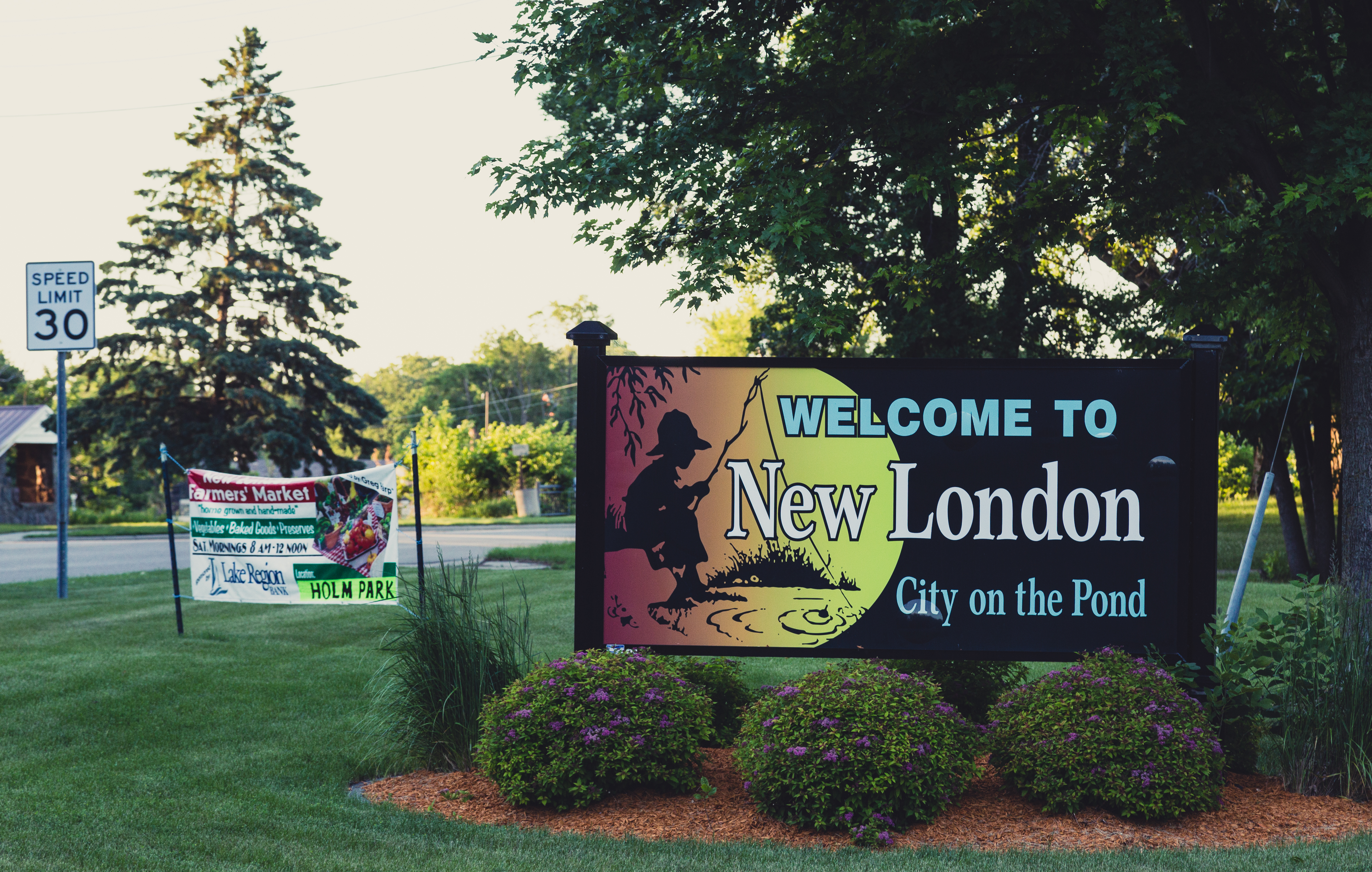
Photo by Tony Webster.
Before moving there, Bergh lived exclusively in urban areas. She grew up in the Quad Cities, and her educational background started with her studies at community college in Tucson, AZ. Though she started out studying cultural anthropology, she was required to take an art class as well, and says she really fell in love with making art when she took a design course, and later a photography course. Bergh continued to study art, eventually earning her BFA in printmaking and photography at the University of Arizona, then her master’s degree in Spatial Arts at San Jose State University in San Jose, California. That’s where she met her husband, painter Andrew Nordin. After she graduated, Bergh and Nordin left the Bay Area and moved to Milwaukee.
She says she couldn’t afford a home and studio in the San Francisco area, and this was a concern in Milwaukee as well. There, while Bergh knew that she wanted to make a living making art, she concluded that city life would make that goal a challenge.
In 2005, Bergh, Nordin and their son moved to New London. She says they intended to leave after about a year, but nearly two decades later, she’s still going strong with no plans to leave anytime soon.
New London is a town of about 1,200 people, and very unlike the places Bergh lived in before. There, though there aren’t many other visual artists, Bergh has been able to connect with many creative people. “I imagined coming from a major metro area to a town without a stoplight would have been a harder transition than it was,” she says. “But I have built a strong career in the arts in Minnesota.”
Bergh relies on social media to maintain connections with professional artists, and she travels to urban areas often with her family, where she meets with other artists in person. Additionally, teaching art at the nearby community college allows her to connect with aspiring artists and learn from them.
Affordability is major factor in her living arrangement. In New London, Bergh and her family live on a property where she and her husband can both have their own studios–an arrangement that wouldn’t be possible in a large city. As much as the arts scene of a place like New York would be preferable for any artist, as Bergh put it herself: “I will always prefer a big studio in the middle of nowhere versus a tiny studio, or no studio, in a major city.”
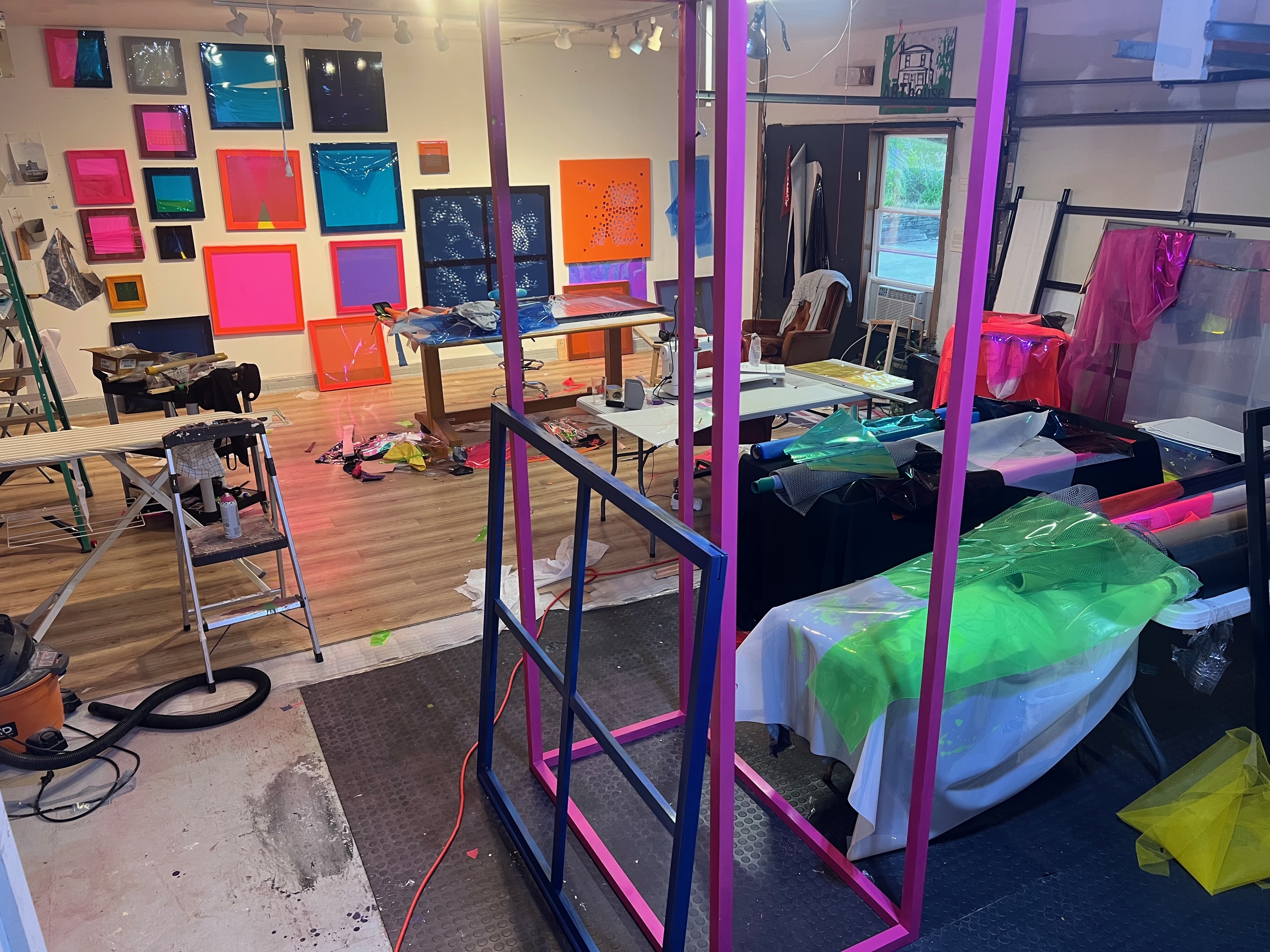
An interior view of Bergh’s studio. Photo by Lisa Bergh.
Bergh says the funding she receives through the state of Minnesota is a big part of what allows her to make the art she wants to make. The Southwest Minnesota Arts Council (SMAC) provides grants of up to $7,000 for individual artists, and Bergh has been a recipient of these grants dating back to 2009. Minnesota also created the Legacy Amendment, which puts aside a small percentage of the state’s budget for environmental restoration, and more pertinently, to fund culture and arts. Bergh received a Legacy grant from SMAC, which has allowed her to work on larger projects such as her Traveling Museum–a small fishing house which she and Nordin repurposed in 2014vto display artwork from many individual artists. The museum is mobile, and has traveled across the Midwest to boost interest in visual arts. Like any artist, Bergh realizes the value in sharing artwork with as wide of an audience as possible and is grateful for the opportunities she has to make what she wants, not just what’s saleable.
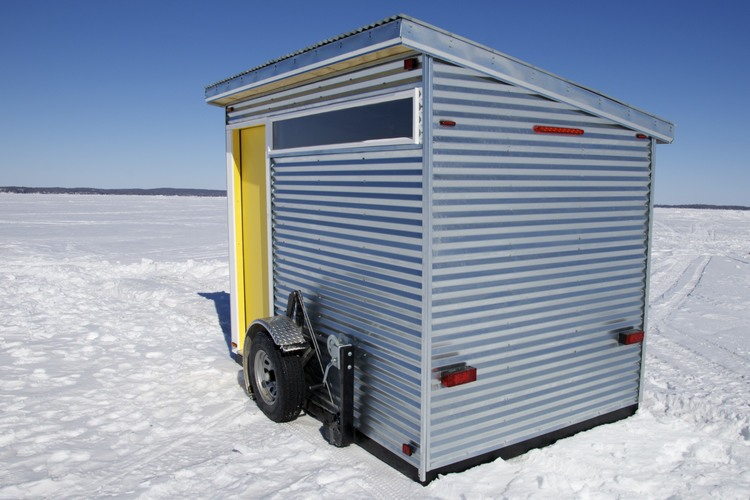
The Traveling Museum. Photo by Lisa Bergh.
Support is really the heart of the matter here. Lisa Bergh has a unique outlook on her surroundings, and a unique style that she uses to communicate that. Her sculptures, tapestries, and 3D plastic paintings take a tremendous amount of effort, time, and love to create, and in order to continue to produce such work, Bergh, and other artists like her need recognition and support. Had Bergh not received the funding that has come her way, she believes she have to fall back on sales of traditional paintings to support herself. Thanks to the commitment to art demonstrated by the State of Minnesota, she and the other artists in the state have been able to keep on creating the artwork that is most meaningful to them.
And it was all possible because she decided to stay in that little Minnesota town.
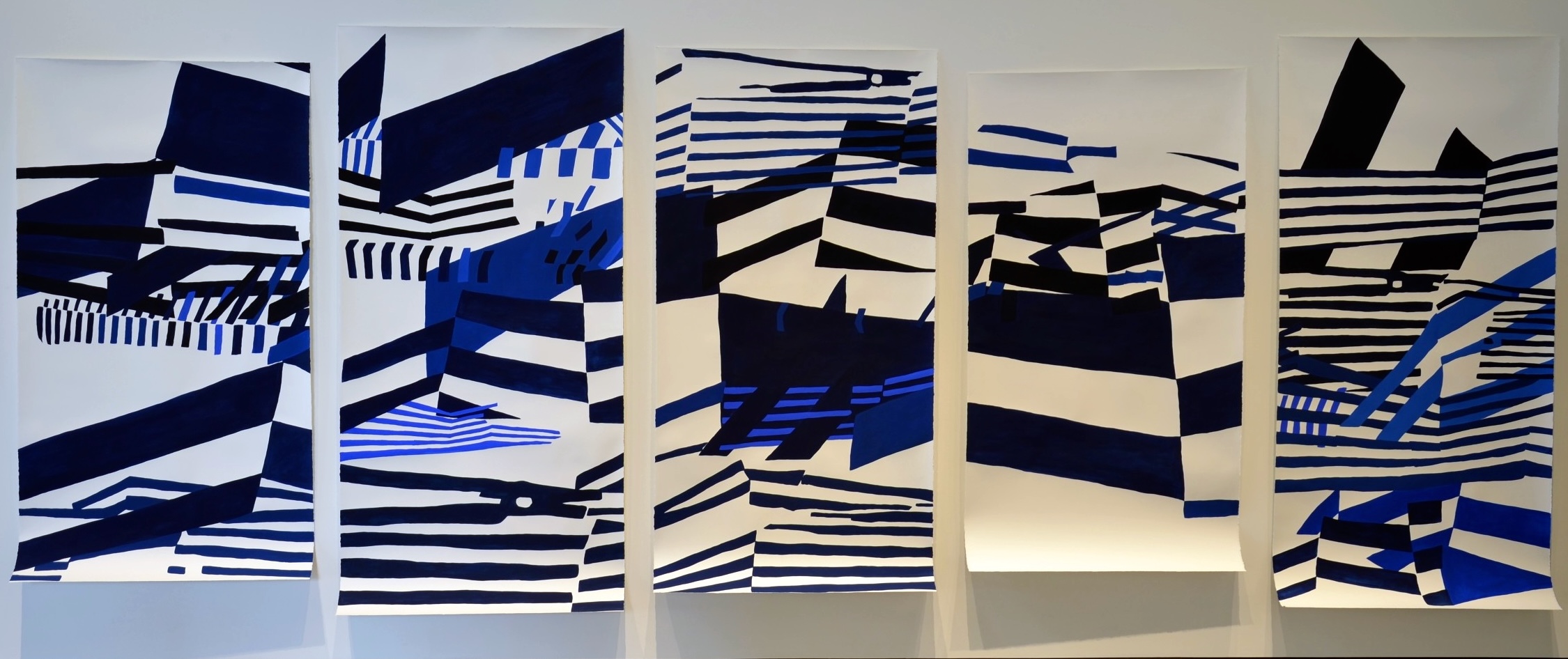
‘Razzle Dazzle’. Tapestries and Photo by Lisa Bergh.
